‘Tiny acts of grace’: The fine art of kitten fostering
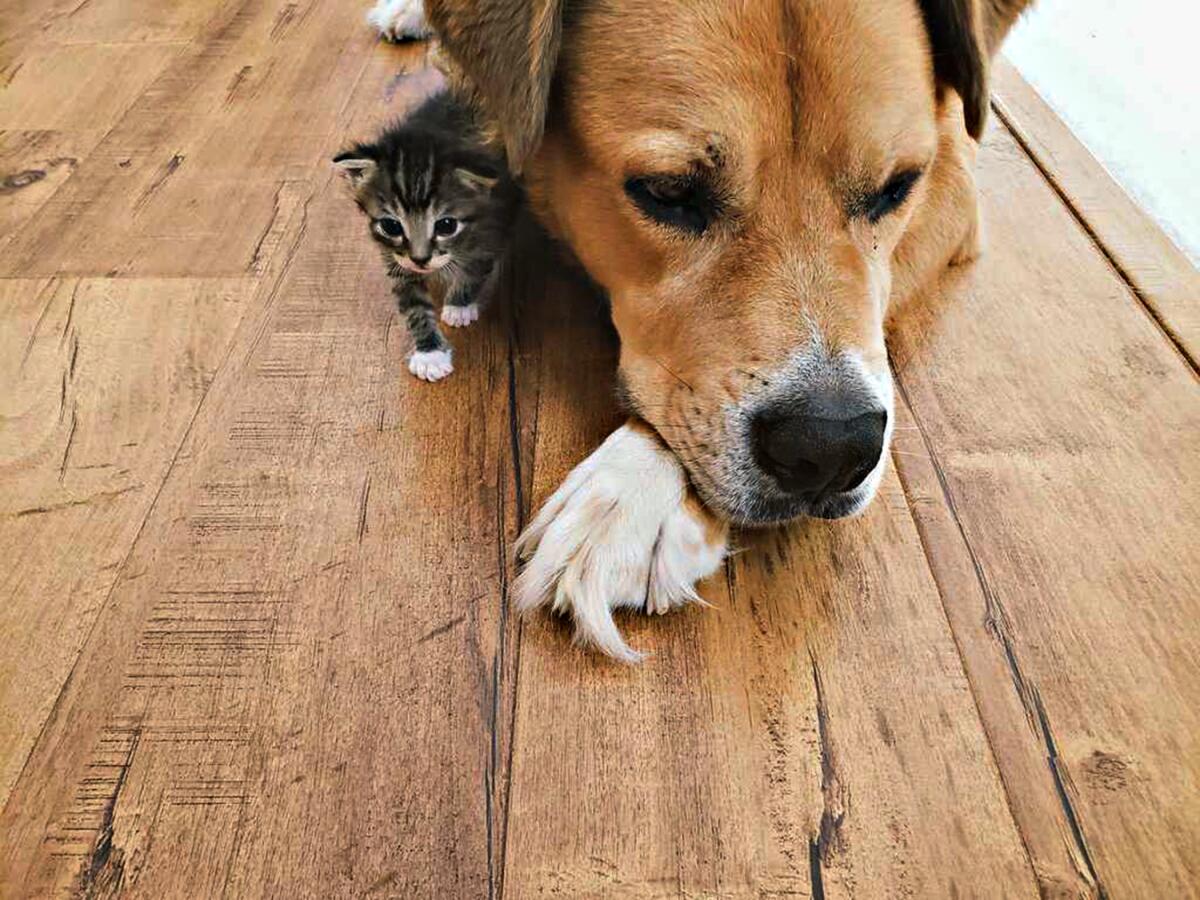
- Share via
Oh, please, not another dead kitten.
My wife, Ikuko, and I exchanged looks. No words were necessary.
The roughly 1-week-old kitten we’d just picked up from a Los Angeles shelter was much smaller than we expected from the online photo, about the same size as our last foster kitty.
And that one, despite our best efforts, didn’t survive. It never got the hang of bottle feeding and grew steadily weaker. After six days, we rushed it back to the shelter for veterinary care. It died a few hours later.
We’d successfully fostered about a dozen kittens before that. Losing one — well, statistically speaking, it was inevitable. About half of bottle-fed kittens don’t make it. But knowing that doesn’t make it any easier.
“Should we take it back?” I asked, gazing nervously at the fragile, bird-like creature, so new to the world that it could barely open its eyes.
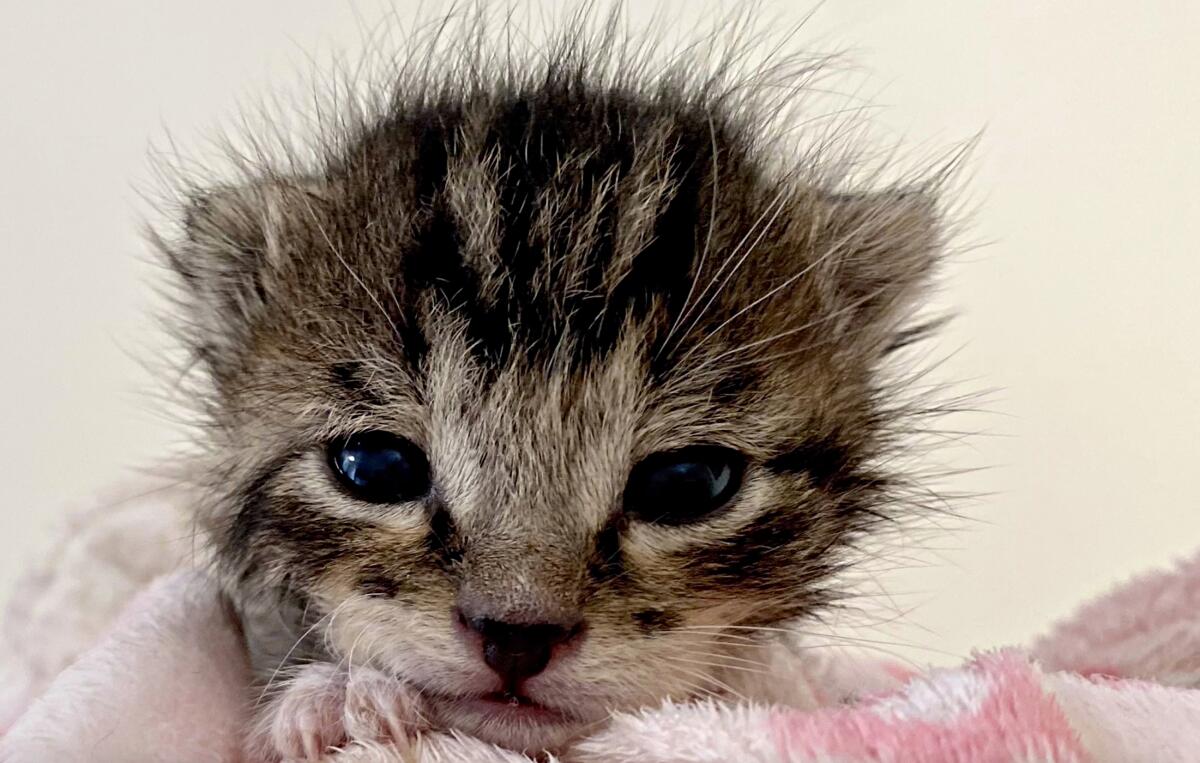
“No,” Ikuko answered. “Let’s give it love.”
So we bestowed the kitten with a name: Lupin. And we gave him love.
Fostering baby animals is hard, I won’t sugarcoat it. You may be awake much of the night handling feedings. There’ll be messes. You’re constantly watching to make sure the little one isn’t underfoot or in danger.
But every little milestone — first feeding, first step, first poop — is a tiny act of grace in an otherwise jaded world.
“Fostering, especially with baby kittens, is an exciting and sometimes scary experience,” said Michelle Sathe, L.A.-based spokeswoman for Best Friends, a national nonprofit animal welfare group.
In Southern California, she told me, “there may be 10,000 or more dogs and cats looking for homes at any given time.”
We’ve all seen stories about how pet adoptions picked up during the pandemic. People felt lonely and maybe a little frightened, and bringing home a furry friend brought emotional relief to millions.
Sadly, there also have been stories about some shelters filling up again as people return their pandemic pals and prepare to resume normal life.
I asked Sathe if these turnabouts with fostering are rough on critters. Isn’t it heartbreaking for a dog or cat to bond with a human and then be rejected?
Sathe replied that any time spent outside a cage is positive.
“Even if you only foster for a week, that’s a week the dog or cat wasn’t in the shelter,” she said. “And I think the animals are pretty adaptable. I think they manage.”
What many people might not realize is that public and private shelters rely on the community to help handle the thousands of orphaned or abandoned animals looking for a home.
Shelter space is so limited, many dogs and cats have to be put down for medical or behavioral reasons, or simply because they require more care than the shelter can provide.
“Newborn kittens are the most vulnerable part of our shelter population,” said Dana Brown, general manager of L.A. Animal Services, which operates six city-run facilities (including the shelter where Ikuko volunteers and which asked us to take in Lupin).
The need for affection and attention, the round-the-clock bottle feedings — “we just don’t have the staff for that,” Brown acknowledged. If a newborn kitten can’t be placed in a foster home right away, it almost certainly will be euthanized. There’s often no other choice.
“This is something that’s very difficult for us,” Brown told me.
It’s also why there’s constant need for the rest of us to step up, if possible, and help homeless critters find their place in the world.
“Even if you foster for just a couple of days, it makes a difference,” said Allison Cardona, deputy director of L.A. Animal Care and Control, which operates seven county-run shelters.
Heck, you can boost your karma by simply volunteering to take a shelter dog for a walk around the block. That’s how desperate these facilities are for helping hands.
Ikuko and I never fancied ourselves as fosters, although we’ve had cats since the earliest days of our relationship.
I’d always wanted a pooch as well, but Ikuko was wary of bringing a dog into our cat-happy home. Which is to say, no dogs for us.
That changed during a 2014 visit to a shelter, which we did from time to time prior to the pandemic just to see if any cats or dogs needed some TLC.
Ikuko and I were wandering among the canine cages when we spotted a mustard-colored dog who looked utterly forlorn. He was sitting at the back of his cage, head down, fur lifeless, his brown eyes saying, “I don’t understand why this is happening.”
He was a big dog, strong, solid. A DNA test would identify him as a mix of golden retriever and Saint Bernard. This was Teddy. I’m sharing this because Teddy would prove instrumental in our future foster activities.
On a whim, we asked if we could interact with him. A shelter staffer led Teddy from his cage into a pen where we could get acquainted. It was obvious right away that he’d had some hard knocks.
He flinched when you made contact. He didn’t want his head touched. He wasn’t sure how to act around people.
But he was sweet — and intuitive. Teddy quickly grasped who held the deciding vote in our little government, and in his first interaction with Ikuko, he met her eyes and leaned against her in a gesture of trust.
He came home with us that day.
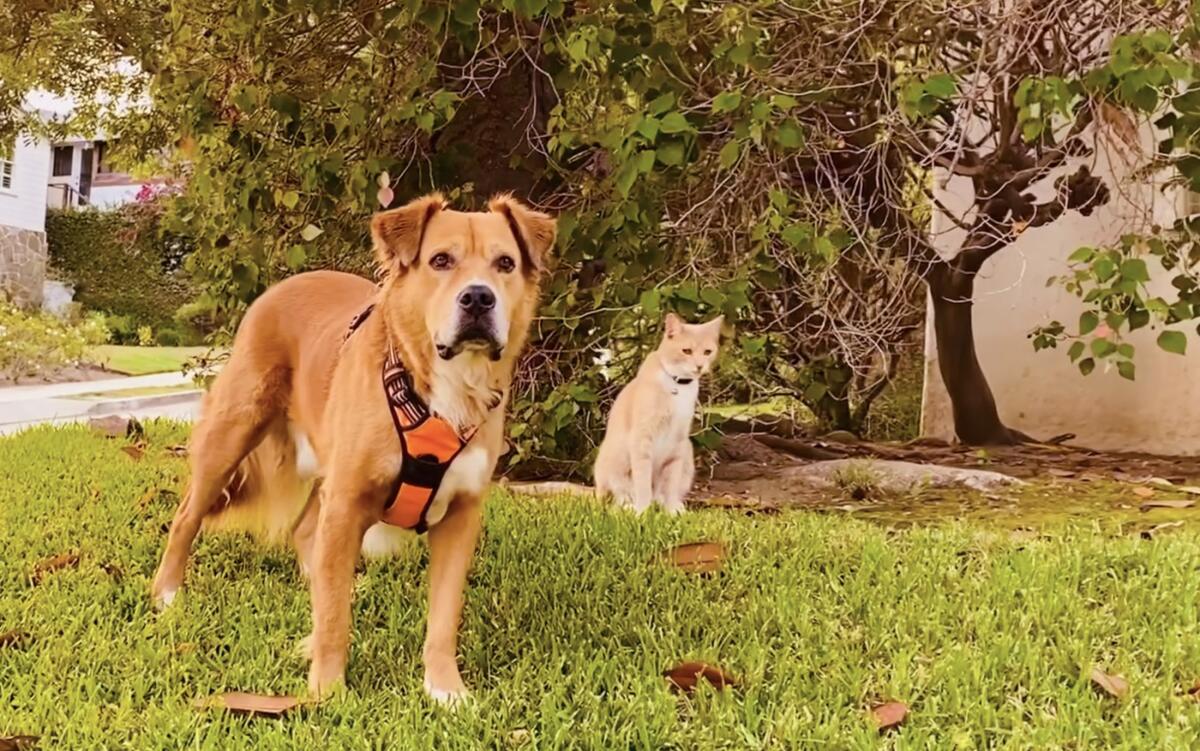
As anyone with a pet knows, there’s something magic about an emotional connection being made between different species. It’s also obviously a long-term commitment (or should be, though it doesn’t always work out that way).
Fostering is different. It’s a short-term deal. Babysitting, with fur.
Our introduction to this world was admittedly self-serving. Our son needed to rack up some community service hours for school. Fostering a shelter animal qualified. We picked up three kittens at NKLA, a nonprofit shelter operated by Best Friends that aims to eliminate euthanization.
Our first foster kittens were about 3 weeks old when they arrived — still bottle feeding but old enough to be out of the danger zone.
It may sound counterintuitive, but fostering multiple kittens is easier than just one. They play together and keep one another amused. When one sleeps, they all sleep.
No less helpful, there’s almost always a bright one in the bunch who figures stuff out faster than the others — how to eat solid food, where to do its business. The others will follow its lead.
The biggest revelation for us, though, was that Teddy not only wanted to be involved, he was good at it.
Teddy, all 80 pounds of him, kept a big-brother eye on the kittens’ rambunctiousness, nudging them with his muzzle if they wandered where they weren’t supposed to go. He let them snuggle and even climb on him.

The kittens, in turn, accepted Teddy as the alpha, the boss, and appeared more at ease with him around. This, we learned, is a major plus in finding forever homes for little kitties.
“It’s a huge selling point,” said Brown at L.A. Animal Services. “If a kitten is already adjusted to other animals, or to kids, it makes it much easier to place it in a home.”
Don’t be shy about taking the initiative in finding homes for your fosters. Yes, you can return them to the shelter when they’re old enough for adoption. But we didn’t like the uncertainty of that.
So we knocked on the doors of neighbors who have kids and invited them to stop by and meet the kittens. No child will refuse that offer, although not all parents are grateful for such blatant emotional blackmail.
Still, all three kitties found homes, and after taking a break for a few months, we jumped back into the foster pool.
We’ve since taken in as many as four at a time (a handful, but Christmas for Teddy) and a few singletons. Most were still bottle feeding. Some were on their way to cathood.
OK, I’ll finally be getting back to little Lupin. But first, a quick word about good intentions.
Shelter operators say most of their kittens are brought in by nice people who discover a litter of little ones in an alleyway or under a bush. They assume the kittens must have been abandoned by their mother.
“Nine out of 10 times, the mom is coming back,” Brown said. “She’s probably just out looking for food.”
Take a close look. If the kittens appear well-fed and relatively clean, Mama Cat is in charge, and that’s better than being in a shelter.
“Try to observe the kittens for an hour or two, if you can,” Brown advised. “See if Mom comes back. If you don’t have the time to wait around, call a shelter and we’ll see if we can send someone out to take a look.”
Once a newborn kitten enters the shelter system, the hunt begins for a foster parent to take over, well, everything. Daunting, yes, but most shelters will provide free training, as well as the needed gear — formula, bottles, blankets, a heating pad.
There are also tons of videos online that will show you how to care for little ones. Hannah Shaw, a.k.a. Kitten Lady, maintains a nifty website, and the videos on her YouTube channel are like a master class for fostering.
Don’t worry about making mistakes. The more you do it, the better you become. And don’t fret (too much) about little ones taking a turn for the worse.
Every shelter worker I spoke with said they understood what Ikuko and I went through after our last little foster passed away. Most said they’d lost a kitten or puppy too.
“It’s something we need to talk about more with people who foster,” Brown admitted. “It happens, and there’s a grieving process when it does.”
Cardona at L.A. Animal Care told me the same. “There’s no shame when this happens,” she said. “It’s almost never your fault.”
Our initial apprehension about Lupin’s tiny stature dissipated as he learned, after a few false starts, how to bottle feed and started putting on weight.
He’s been with us about a month and has more than doubled in size (which highlights, at less than half a pound, how underweight he was when the shelter put out a call for help).
It took Lupin several weeks to figure out the litter box — a very big deal — although an acute case of kitty constipation required some assistance on our part (YouTube to the rescue). This milestone was followed by his first tentative breakfast of solid food.
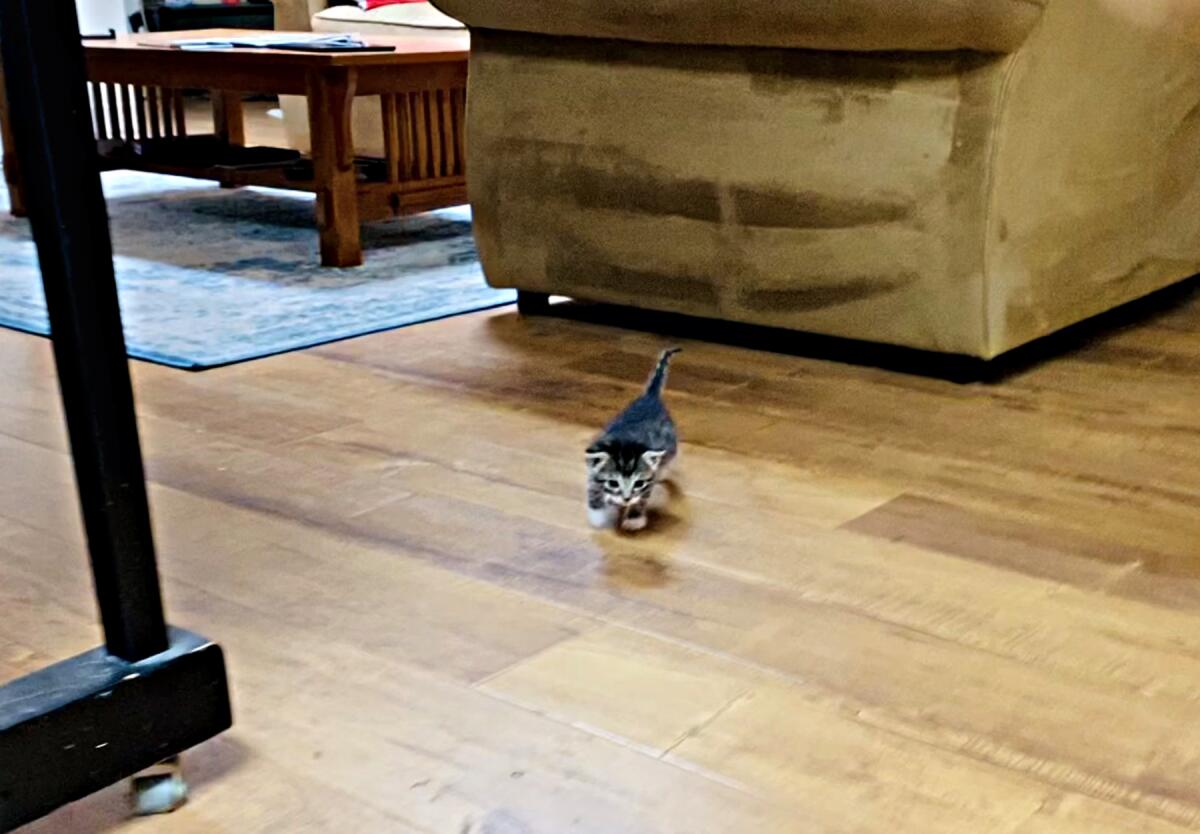
Once he got his back paws to cooperate with his front ones, he started trundling around the kitchen like a miniature Land Rover. Teddy still keeps a close eye on Lupin as he explores his rapidly expanding territory, but I get the sense Teddy is asking the same questions we are.
Will we keep fattening him up and then find him a forever home? Or will we become “foster fails” and hang on to the little dude?
I know what my Twitter friends will say after all the Snickers-sweet photos and videos of Lupin I’ve posted.
My social media circle also will be noting that I’ve yet to mention our scene-stealing cat Jupiter.
We adopted Jupiter in March after Ikuko saw his picture on the West L.A. shelter’s site. She asked a staffer to let her take a closer look via video, and two hours later, Jupiter was a member of the family.
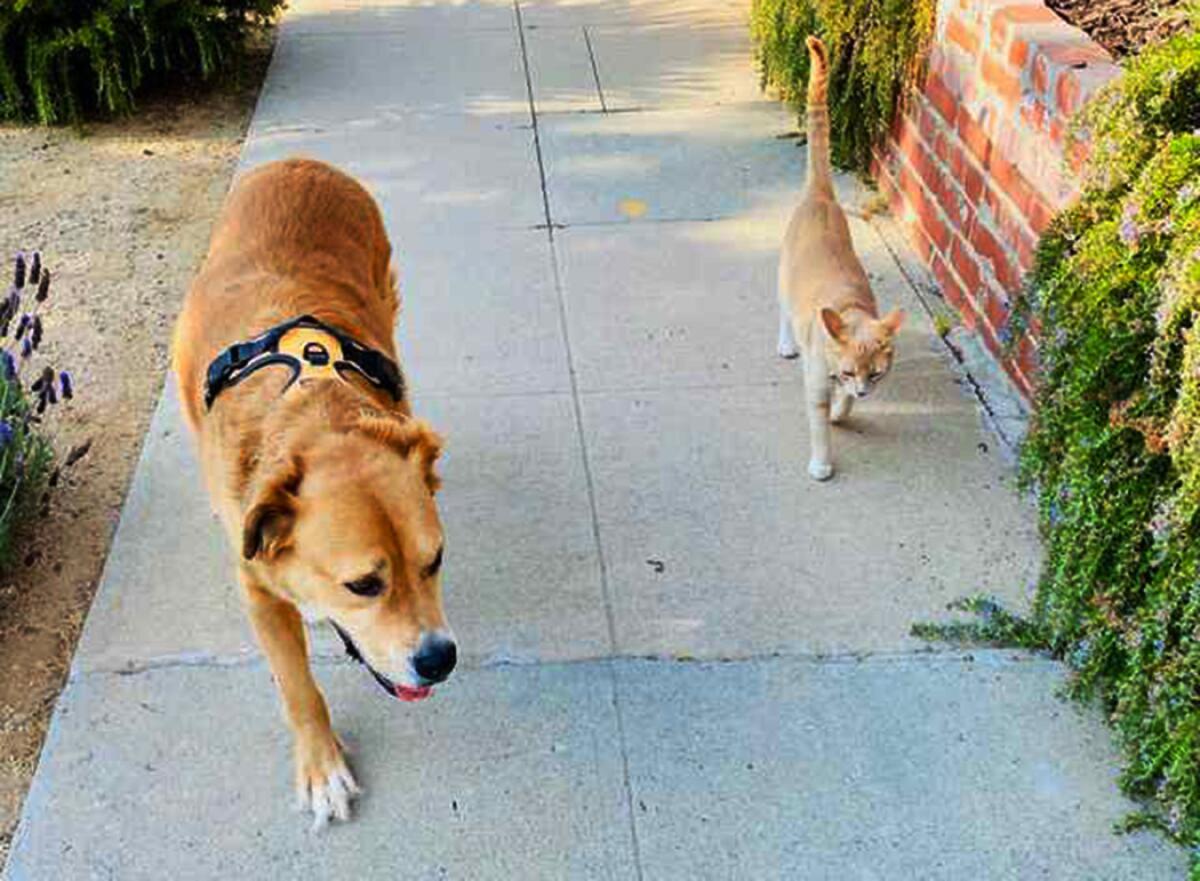
He was 6 months old, not a foster kitty. His previous owner had turned him over to the shelter, for reasons I’ll never understand. He’s an outrageously cool cat.
Jupiter wasted no time in bonding with Teddy, and the two are now best buddies. They hang out together, sleep together, go for walks together, compete for control of Teddy’s dog beds.
Lupin’s arrival, as can often happen, threw off the delicate balance of our little zoo. Jupiter started spending more time in the backyard. Sora, our shy calico, also a rescue, grew even more reclusive.
For the sake of our other cats, we’re leaning toward finding Lupin a new home when he’s old enough.
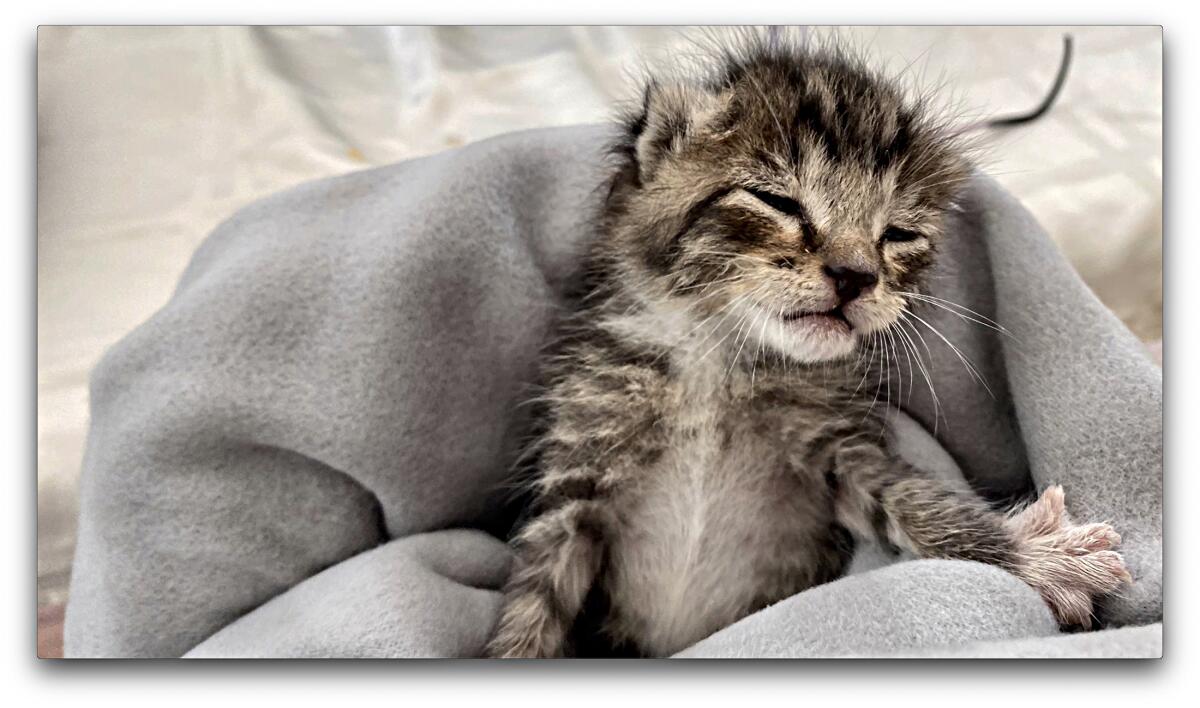
This also would open the door to us fostering again, to being there for another baby that wants only to love and be loved.
And that’s the whole point.
More to Read
Sign up for Essential California
The most important California stories and recommendations in your inbox every morning.
You may occasionally receive promotional content from the Los Angeles Times.









